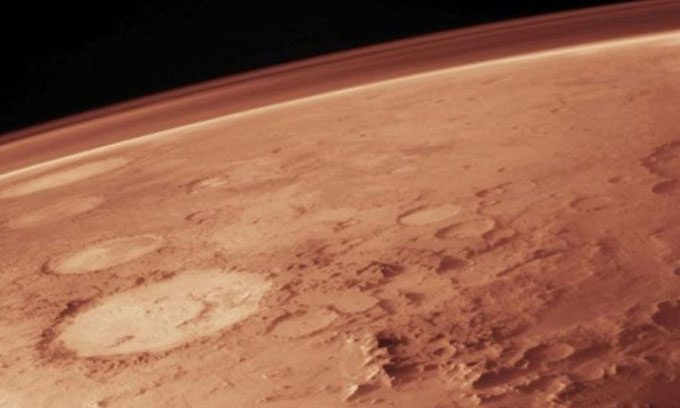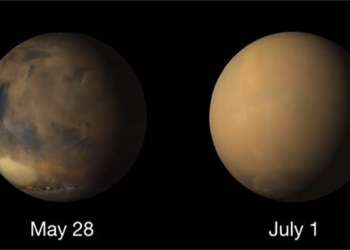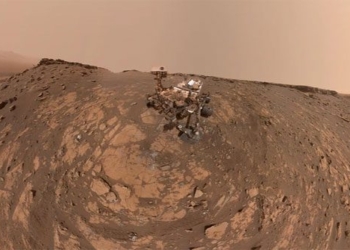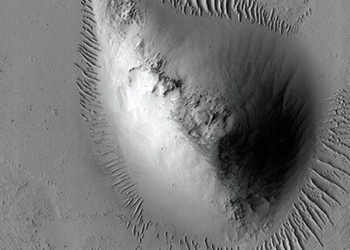Hypersonic drone with a speed of nearly 6,200 km/h, using magnesium fuel to burn carbon dioxide available in the atmosphere of the Red Planet.
The Ingenuity helicopter from NASA has managed to fly over 600 meters on Mars, where the atmosphere is more than 100 times thinner than that of Earth, making it unsuitable for helicopter blades to rotate. However, according to calculations by Professor Xu Xu and his colleagues at Beijing University of Aeronautics and Astronautics, a 500 kg hypersonic drone could traverse the Martian surface at a speed five times the speed of sound with a range of 1,000 km.

Mars has a much thinner atmosphere compared to Earth. (Image: NASA).
The gravity on Mars is only one-third that of Earth’s. The lower air density results in less heat generated from turbulence compared to Earth at the same altitude. “The first hypersonic flight on Mars cannot occur within the next 30 years due to many technical issues that need to be resolved,” Xu stated. “However, as humans begin to colonize Mars and establish settlements at various locations across the planet, the demand for long-distance travel will arise.”
Xu and his team published part of their research in the journal Manned Spaceflight. According to their description, the hypersonic drone uses magnesium as fuel because there is almost no oxygen on Mars. Humans cannot breathe in the Martian atmosphere, which contains 96% carbon dioxide. However, magnesium can burn carbon dioxide. Japanese scientists proposed using magnesium as fuel for travel on the Red Planet back in the 1980s. In 2016, a NASA research team designed a magnesium-powered device to help rockets decelerate when landing on the planet’s surface. However, no researchers had considered a hypersonic flying vehicle on Mars due to significant challenges regarding thrust.
To enhance the efficiency of burning carbon dioxide with magnesium, Xu’s group designed a straight jet engine that allows magnesium powder to be burned twice in separate chambers. The vehicle will have a cruising speed of 6,174 km/h, significantly lower than on Earth. The hypersonic drone will not have large wings but will be elongated like a cruise missile.
The cruising altitude of the hypersonic drone is set at 5,000 meters, lower than commercial aircraft, to suit the thin atmosphere of Mars. The drone will need to avoid mountains that are three times the height of Mount Everest. Xu and his colleagues are currently in the phase of proving the feasibility of this technology. They will need to create a small prototype and test it in a wind tunnel filled with carbon dioxide to simulate the Martian environment. Although the Red Planet has magnesium ore, the first flights of the vehicle will use metal mined from Earth.





















































